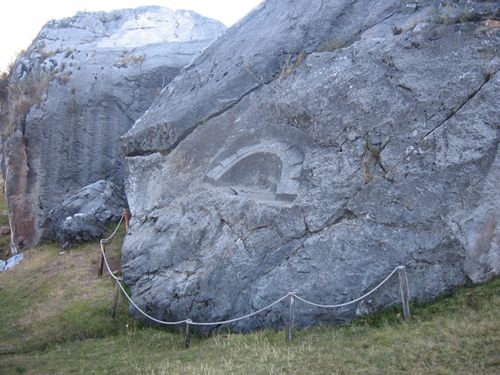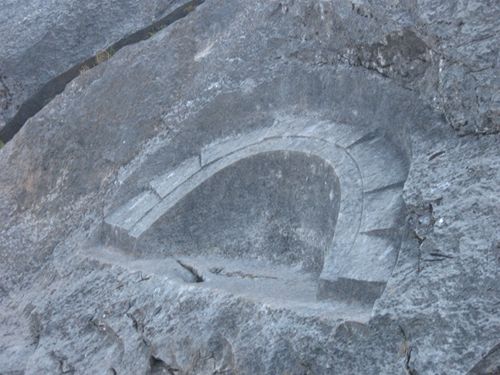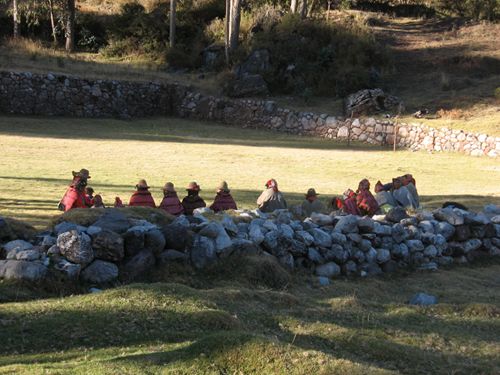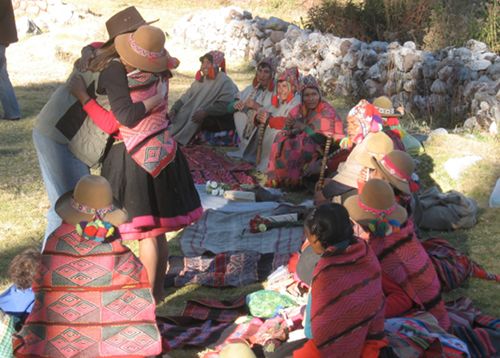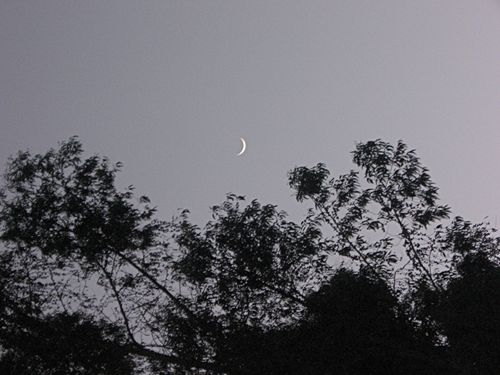An important part of my journey on this path is to regularly give despachos (offerings) to the Pachamama (the great Being who is the planet Earth), to the Apus (the Beings who are the majestic mountain peaks), and to the creek who flows so beautifully past where I like to meditate. Despachos are offerings made to nourish our relationship with Nature and the Cosmos. In the Andean Cosmovision it is possible to form a relationship of respect and love with Nature and the Cosmos, for the Andean people live in a physical world that is as conscious of them as they are of it (see the post Barefoot in the Mountains).
Despachos can be very simple or very elaborate. The despachos I have seen the Q’ero (also spelled ‘Qero’) make are both elaborate and beautiful, with each element carrying important significance. The intent of a despacho can be to express gratitude and nourish the relationship with the facet of the Cosmos to whom the despacho is offered, or it can be to express some specific desired outcome. In this post I would like to share how to make simple despachos of gratitude.
Joan Wilcox in her informative book Masters of the Living Energy: The Mystical World of the Q’ero of Peru draws a distinction between ‘despachos’ (made for specific outcomes) and ‘pagos’ (simple expressions of gratitude). I have not heard don Americo Yabar draw that distinction. Both terms are Spanish in origin, and when I turn to my English-Spanish dictionary to see if it can clarify the meaning of the terms I am led to wonder how either every came to be associated with the offerings made in the Andes. Perhaps the dictionary doesn’t tap a subtle use of the terms that would indeed fit the despachos of the Andean people.
I use the term ‘despacho’ for any offering made to Nature or the Cosmos in the spirit of ayni, no matter how simple or complex, including those made just to express gratitude. As I write this my mind wanders back to a workshop by don Americo that I attended in Hawaii. We made a group despacho, consisting simply of flowers that we all brought to lay upon the Pachamama (in this case the verdant slope of a volcano). After the despacho was complete a hole opened in the cloud cover and a shaft of sunlight slanted down to illuminate just the flowers. It was a beautiful experience.
Simple despachos of gratitude have become an essential part of my Andean meditative practice. This began one time when I was teaching some of the Andean meditations to friends. We were sitting out in the woods. We started with the Touching the Pachamama meditation and then moved on to the Releasing Hucha meditation. When it was over I was overcome by a deep sense of appreciation of living in a conscious Cosmos where the Pachamama will accept our hucha from us, where the Cosmos will send down refined energy to replace the hucha, and where all the facets of Nature and the Cosmos are available to help support our personal and interpersonal transformations in a relationship of mutual respect and love.
Up to that point my despachos had been mainly rather formal rituals I went through out of a sense of obligation. But all changed in that moment. Since then I always bring some tequila with me when I go into the canyons to meditate. After clearing my hucha I pour a little tequila onto the Pachamama with the intent (sincere pretending) that it carry my gratitude to her, if I am sitting next to the creek I give a little to the creek with the same intent, and I throw a little tequila into the sky for the Apus. This–the simplest of despachos–is my heart-felt way of connecting to these facets of Nature. Despachos are not the material components of some spell to control nature, they are not bribes nor payment for services rendered, they are like giving flowers to a loved one, they nourish the relationship. And as I write this it occurs to me that gratitude is indeed an interesting thing, it is something that cannot be faked.
Sometimes I want to offer a more elaborate despacho, and this takes a little bit of preparation. I base these despachos on a few of the elements I have seen go into the elaborate Q’ero despachos. For a despacho to the Pachamama I bring three red flowers and three white flowers. Red and white flowers are an important part of Andean despachos. Red flowers represent blood, the Pachamama, the feminine. White flowers represent the masculine energy and the Apus (most but not all of whom are male), white also represents the stars. I also bring three sugar cubes. Once when I was in Peru, and a Q’ero woman was explaining the significance of the various elements she was adding to her despacho for the Pachamama, she placed some candy into the despacho and explained that the Pachamama has a sweet tooth. Americo, who was translating for us, winked and joked that this might be a projection. Still, candy or sweets are a nice touch for a despacho to the Pachamama.
To complete a despacho for the Pachamama I dig a small hole into the earth. In the Andes the despacho would be wrapped in a large sheet of paper and tied with a string before burying, but I skip the paper for Western, ecological, reasons. I hold the flowers up to my mouth and gently blow on them three times, with the intent of imbuing them with the very finest of my energy. I then gently place the sugar cubes and the flowers into the hole, and pour a little tequila on them while holding the intent of expressing my gratitude to the Pachamama for all that she gives us. Finally, I fill in the dirt on top of the despacho and gently press it down with my hands.
For the creek that flows past my meditation spot I bring three red and three white flowers, gently blow on them three times to imbue them with the very finest of my energy, and then I cast the flowers into the flowing water, and follow that with a little tequila, again with the intent of expressing my gratitude to my brother the creek, for his beauty and for what he brings to me as he flows through my life.
For the Apus, I use the same elements as I do for a despacho for the Pachamama, but I bundle them into a piece of paper, tied with a string, that I then place in a fire. As I rarely make a fire I don’t make this despacho very often.
OK, that’s it, that is what I do. Ayni. Very simple. If you would like further information on making despachos I would like to refer you to Joan Wilcox’s book. I may write further about despachos in this blog.
I have made the point repeatedly in these posts, particularly when discussing some meditation or another, that I believe the essence of the Andean approach is our relationship with Nature and the Cosmos. The various beneficial results of the meditations, including personal and interpersonal transformations, are but byproducts of the beauty and actualization of this relationship. It is a relationship that is not even seen as possible in the assumptions of Western culture. But we don’t have the only set of assumptions on this planet.
For the past summer I have meditated a lot outdoors, and I have gotten a lot from the meditations, and I’ve given many despachos, and it is all ayni, all reciprocity, given with respect and love. I’ve changed, my experience of reality has changed, the reality around me has changed, all in subtle ways, but enough for my heart to sing a soft melody.
Share... 




 Part of the beauty of following a path of heart is the company I get to keep. Here we are at Molino, Gayle’s place in the Andes that he has converted from an old mill into a wonderful setting for groups to stay and connect to the river and the Apus and the stars and the Cosmos.
Part of the beauty of following a path of heart is the company I get to keep. Here we are at Molino, Gayle’s place in the Andes that he has converted from an old mill into a wonderful setting for groups to stay and connect to the river and the Apus and the stars and the Cosmos.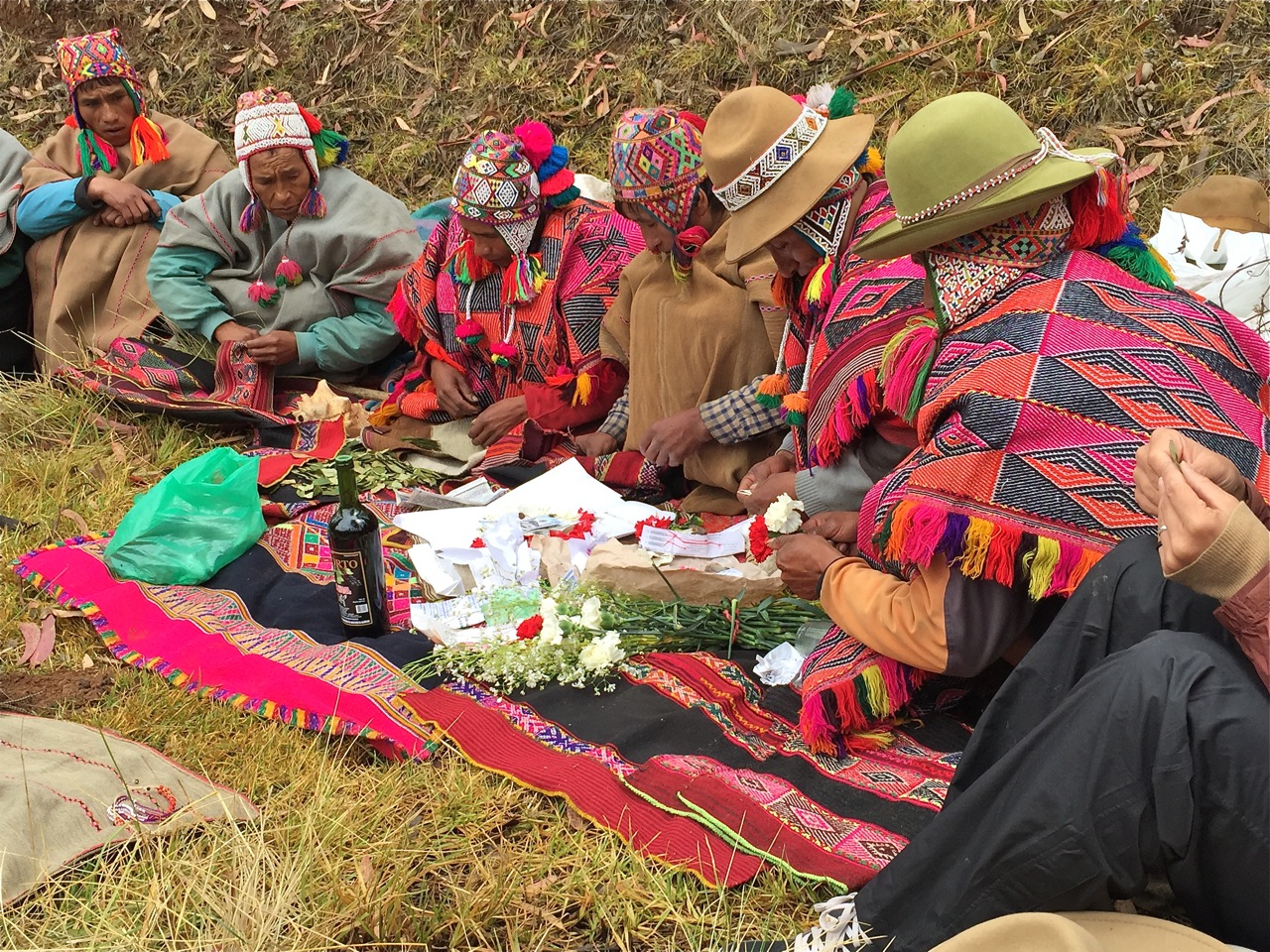 Our first meeting of the trip with the Q’ero, here the men are creating a despacho (offering).
Our first meeting of the trip with the Q’ero, here the men are creating a despacho (offering).
 A special moment. We passed this old man carrying a large sack up into the mountains. Americo stopped to connect with him and give him some food. Things like this happen a lot when we travel with Americo, what a path of heart! Photo by Pia Ossorio.
A special moment. We passed this old man carrying a large sack up into the mountains. Americo stopped to connect with him and give him some food. Things like this happen a lot when we travel with Americo, what a path of heart! Photo by Pia Ossorio.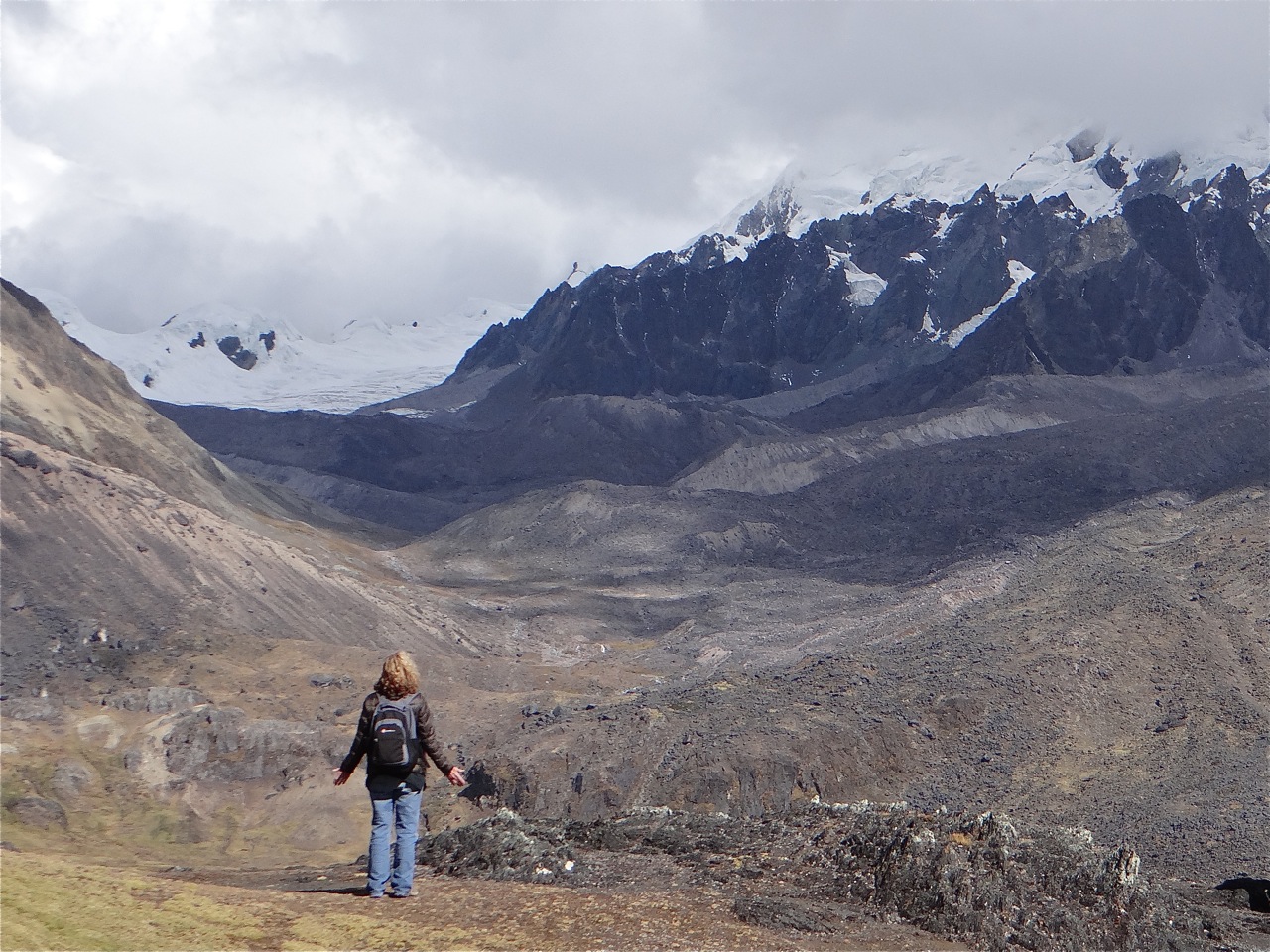 Connecting with an Apu. We were at 16,000 feet, the Apus tower much higher still.
Connecting with an Apu. We were at 16,000 feet, the Apus tower much higher still.